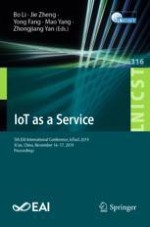This book constitutes the refereed post-conference proceedings of the Fifth International Conference on IoT as a Service, IoTaaS 2019, which took place in Xi’an, China, in November 2019. The 54 revised full papers were carefully reviewed and selected from 106 submissions. The papers contribute to the discussion on the challenges posed by Internet of Things (Io). The two technical tracks and three workshops deal in detail: Networking and Communications Technologies for IoT, IoT as a service, International Workshop on Edge Intelligence and Computing for IoT Communications and Applications, International Workshop on Wireless Automated Networking for Internet of Things, and International Workshop on Ubiquitous Services Transmission for Internet of Things.
